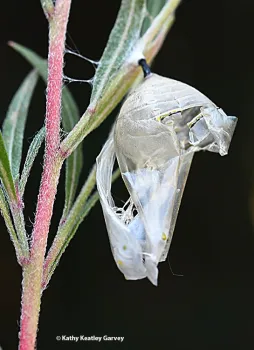
Since Sept. 1, 2020, we've reared and released 28 healthy monarch butterflies into the Vacaville, Calif., area.
Each eclosed from its chrysalis, dried its wings, and fluttered around its indoor habitat (a netted, zipped, pop-up container available at the Bohart Museum of Entomology at the University of California, Davis and online).
Then each alerted us that it's time to leave.
Let me out! Now!
The entire process, from egg to caterpillar to chrysalis to adult, is not only breathtaking but phenomenal. Each time is special. Each time is unique.
Over the last four years, our little project has involved a little over 100 caterpillars (total) reared to adulthood, but this year, the COVID-19 Year, we reared them mostly from eggs. We collected the eggs before their predators (spiders, milkweed bugs, lady beetles, green lacewings, et al) sought out a meal. We collected the larvae or caterpillars before the wasps, tachnid flies, praying mantids and birds eyed them.
So, there they were, the Magical 28, and there they went, the Magical 28.
Their entrance into a world unknown (seven different Freedom Days) varied:
- Some edged out of their habitat container as if confused about what to do next
- Some bolted out as if a California scrub jay were chasing them
- Several touched down on flowers, such as the UC Davis yellow roses, "Sparkle and Shine," and the Mexican sunflowers (Tithonia rotundifola)
- Several fluttered into the crape myrtle tree
- One hugged a fence post
- One decided to become an integral part of our garden sculpture, the Ray Carrington railroad tie sculpture. (Emeritus entomologist Walter Bentley, UC Cooperative Extension farm advisor and UC Integrated Pest Management advisor, called it "The Iron Butterfly.")
As of today, the Magical 28 are gone, but their buddies are waiting in the wings. Nine chrysalids remain. The Magical 9?

